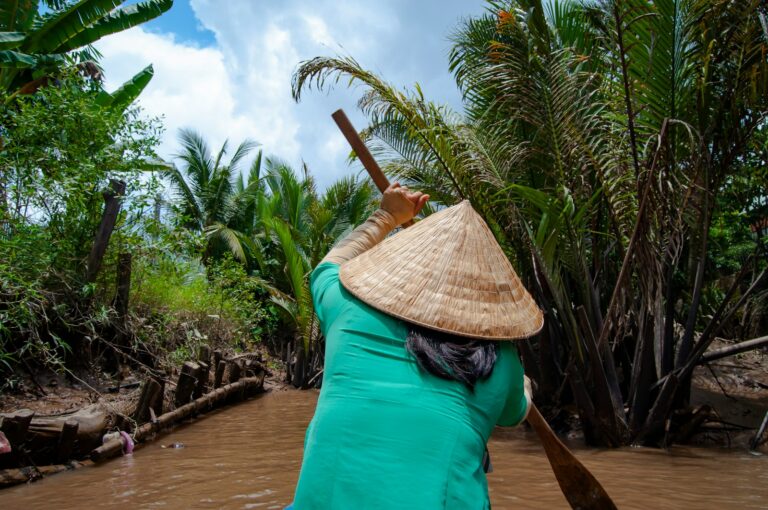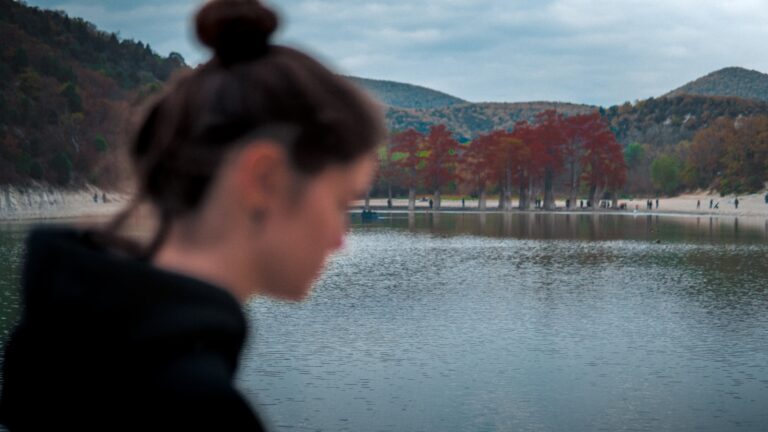Long An: A Peaceful Escape Next to Ho Chi Minh City
Long An Province, sitting quietly beside Ho Chi Minh City, is like a hidden treasure waiting to be found. It’s known as the gateway to the Mekong Delta, yet still feels untouched by mass tourism. This peaceful land offers colorful markets, ancient houses, wild forests, and floating temples—perfect for a weekend getaway from the hustle of the city.
One of the best places to start your journey is Can Duoc Market. I recently visited early one morning and was immediately pulled into the energy of the place. The market is one of the oldest and busiest in the region. You’ll see rows of vendors selling everything from fresh fruits, vegetables, fish, and seafood to cooked local dishes that fill the air with rich, mouthwatering smells.
The vendors here are not just friendly—they’re true experts. Talk to them, and you’ll learn about ingredients you’ve never heard of. You may even walk away with new cooking ideas and flavors to try at home. And it’s not just food. Local craftspeople sell handmade baskets, hats, and mats, all created with traditional techniques passed down through generations. Buying a souvenir here helps support the local community.
To make the most of Can Duoc Market, go early in the morning. That’s when farmers and fishermen arrive with their freshest goods. The vibe is alive, filled with motion, noise, and excitement. Not far from the market is the famous Hundred Pillar House in Long Huu Dong Commune, near the Vam Co Dong River. It was built between 1901 and 1904 by artisans from Hue. While it has some similar features to traditional Hue houses, this one stands out with its southern twist—decorative patterns showing dragons, flowers, birds, and tropical fruits. Even grapes, roses, and squirrels appear, a sign of European influence. Each carving shows off the skill and creativity of its builders.
Long An also surprises visitors with its wild side. In Moc Hoa District, you’ll find the Tan Lap Floating Village—or more accurately, a vast cajeput forest. It’s called a “floating village” because during the flood season, local houses seem to rise and float on the water. But what you’ll actually see is a peaceful forest full of birds, butterflies, and wild orchids. Wooden paths wind deep into the trees, perfect for a quiet walk or bike ride.
This place is also a paradise for birdwatchers. It’s calm, green, and alive with bird calls echoing through the air. Not far from Tan Lap is Lang Sen, a wetland area now protected as a Ramsar site—an internationally important conservation zone. Its name means “Lotus Village,” and true to that name, lotus flowers bloom everywhere. It’s like a smaller version of Dong Thap Muoi, a giant floodplain of the Mekong Delta.
Lang Sen is beautiful year-round, but the best time to visit depends on what you want to see. From December to April, the dry season brings blooming Melaleuca trees and low water levels, perfect for walking. From August to November, during the flood season, thousands of waterbirds arrive. You can ride a small boat through the canals and soak in the beauty and stillness of the wetlands.
For something truly unique, visit Co Son Pagoda—also called the Floating Temple—along the Vam Co Tay River. Built on a small hill, the temple has never been touched by floodwaters, no matter how high the river rises. That’s part of why locals believe the place is sacred. Long ago, children played with small clay statues here, and their parents would toss them into the water to stop them from playing. Strangely, the statues would float instead of sinking. That led villagers to believe the place was blessed, and they built a temple there.
Today, Co Son Pagoda still stands peacefully under the shade of ancient trees. It’s been rebuilt several times due to war and time, but its structure remains full of charm and history. The site also contains prehistoric artifacts—pottery, tools, and animal bones—telling the story of people who lived here long ago. One of its most famous features is a giant bastard poon tree over 100 years old, now recognized as a Vietnam Heritage Tree, along with five ancient oil trees nearby. For the best experience, visit during the dry season (December to April) when the temple is easiest to explore. But if you come during the flood season, you might witness the temple rising like an island above the water.
Photography lovers will also fall in love with Long An. In the wetland areas, boats glide across calm rivers, flowers bloom across the landscape, and rice fields stretch toward the horizon. Even with a smartphone, you can take photos worthy of postcards. Photographers familiar with the area often guide visitors to capture the best lighting and angles. It’s not just about snapping pictures—these photo trips are also a way to meet locals, learn about their daily lives, and watch them farm, fish, or weave.
Getting to Long An from Ho Chi Minh City is simple. The province is just around 46 kilometers away. By car, motorbike, or bus, the journey takes about one to one and a half hours. Buses are affordable and frequent, especially from Cho Lon Bus Station in the city to Long An Bus Station. For those who like adventure, a motorbike ride gives you the chance to enjoy the scenery along the way. Or, rent a car or take a taxi for comfort.
Long An might not appear in every travel guide, but that’s part of its charm. It offers a slower pace, local experiences, and nature in its raw beauty. Whether you’re here for food, temples, forests, or photos, Long An invites you to discover its quiet magic—just a short ride from the city, but a world away in spirit.

By Ngoc Tran



